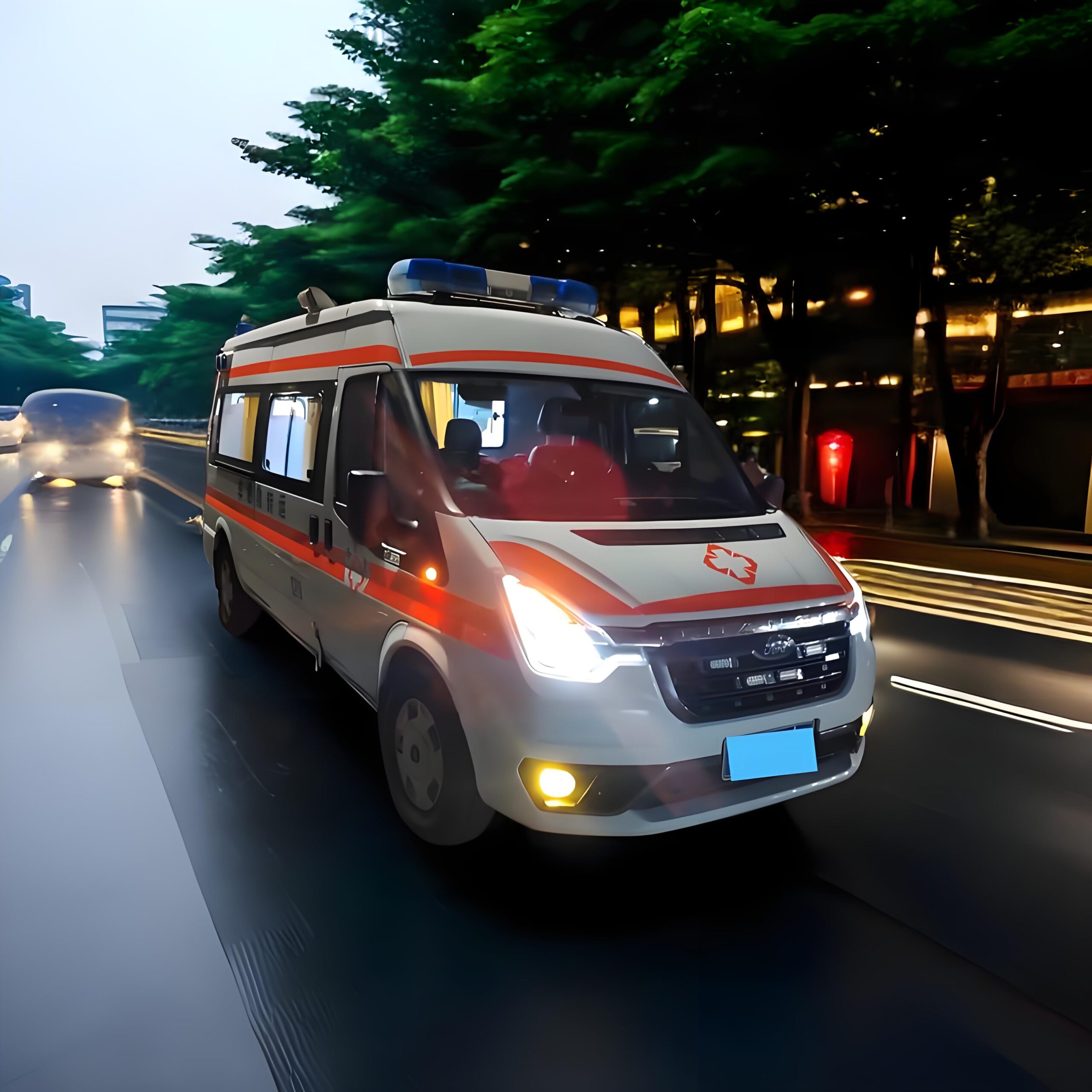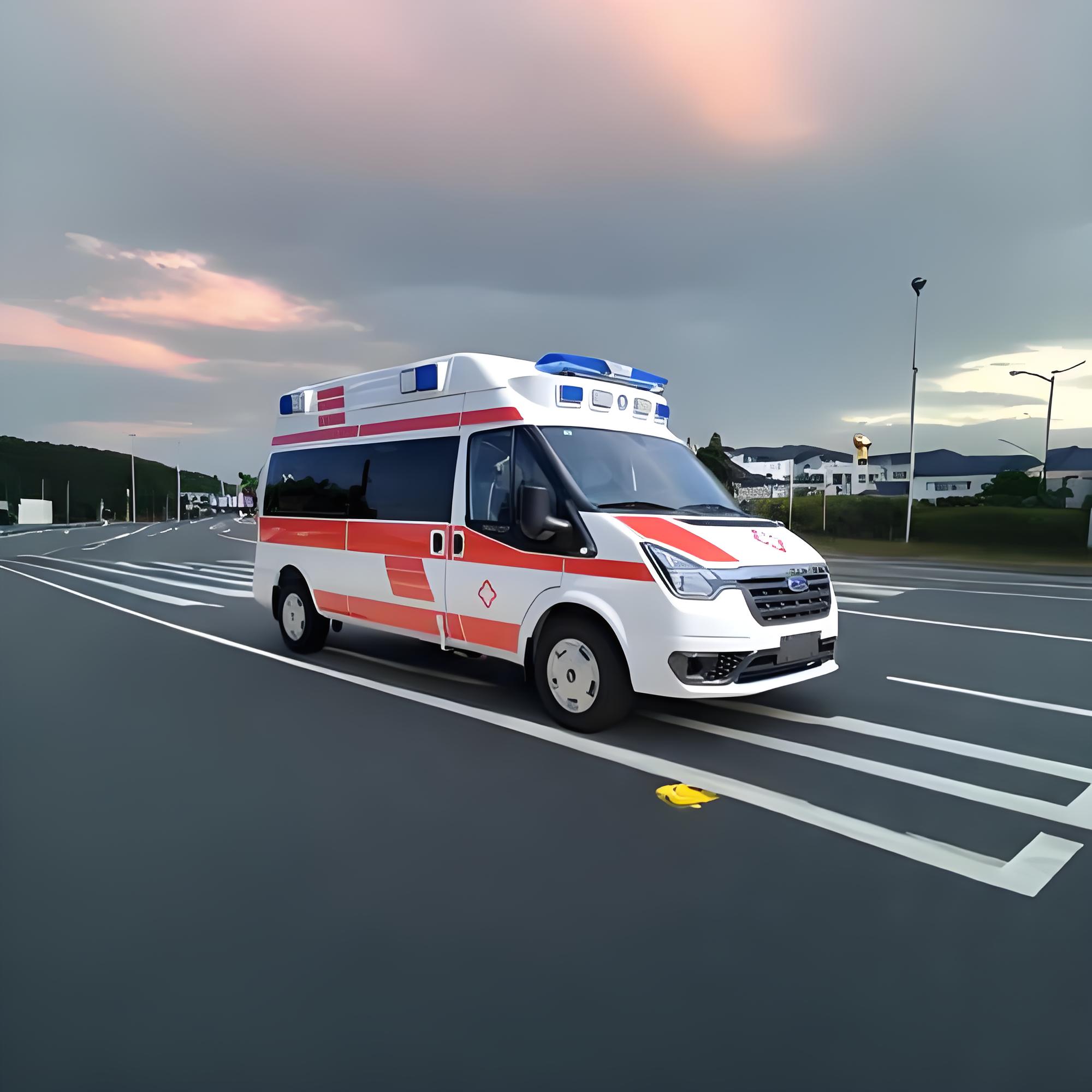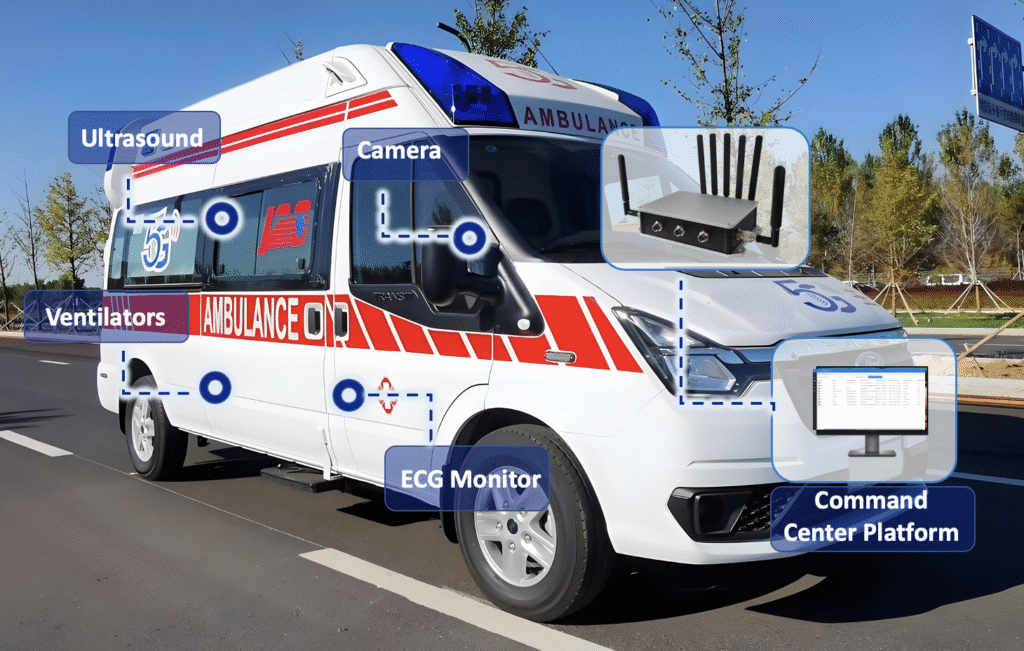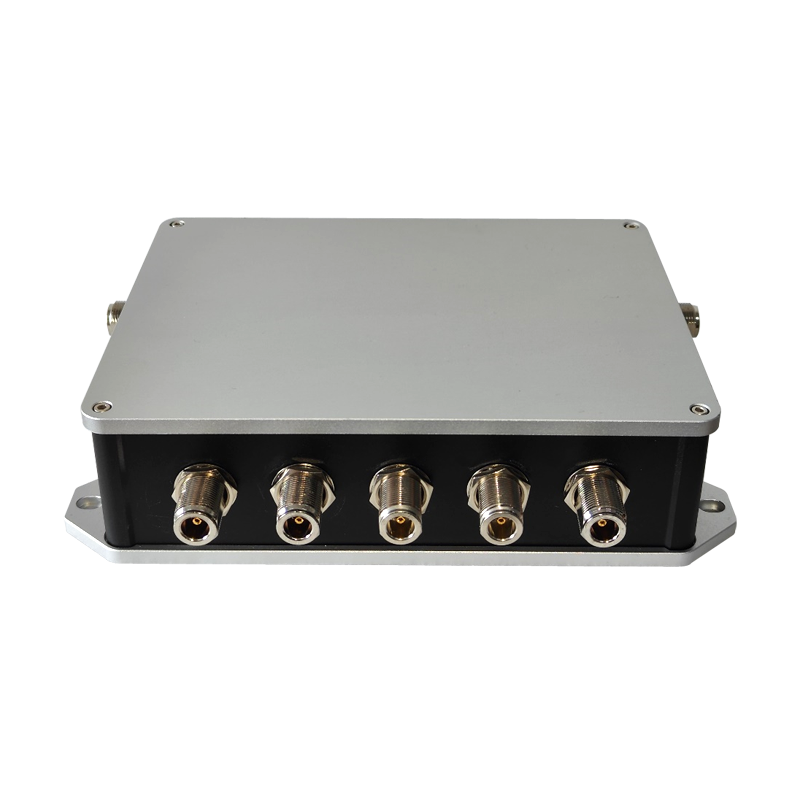
Digital Transformation in Emergency Medical – Building an efficient, safe and interconnected mobile emergency rescue system based on 5G Vehicle Gateway AIoT-5G-NV06

الخلفية
In medical emergencies, time is life. The coventional emergency process usually requires patients to arrive at the hospital to complete examinations and diagnoses, such as electrocardiograms, blood draws, B-ultrasound, etc., and then be diverted to the corresponding department for treatment. This “treatment after arrival” model has information lags and low efficiency, and it is very easy to miss the best treatment window.
With the rapid development of 5G communications, the Internet of Things, and the digital upgrade of medical equipment, the emergency system is ushering in a comprehensive digital transformation. Building a high-speed information channel between ambulances and hospitals, so that doctors can grasp the patient’s vital signs and formulate diagnosis and treatment plans before the patient arrives, is becoming a key direction of the new generation of emergency systems.
التحديs
Parallel access of multiple devices
Multiple medical devices such as ventilators, ECG monitors, and B-ultrasound need to be connected to the Internet to transmit data at the same time.
High-definition video transmission pressure
In-vehicle video needs to be transmitted back in real time for the command center to view, requiring high bandwidth and low latency.
High data transmission security requirements
Medical data is sensitive and requires strict data security and privacy protection mechanisms.
High mobility of ambulances
Extremely high requirements for network stability and signal coverage under high-speed mobile conditions.
Data silo
the in-vehicle system and the in-hospital system are not interoperable, making it difficult to achieve closed-loop emergency.
Vehicles dispatch and management
The emergency center needs to have real-time access to the status and location of ambulances, improve dispatch efficiency, and achieve fleet management visualization and response process optimization.
الحل
TruGem 5G vehicle gateway AIoT-5G-NV06 plays a key node in driving the digital transformation of emergency vehicles. As the data hub between “vehicle-hospital”, the gateway not only realizes the high-speed collection and transmission of medical data, but also helps build a closed-loop, efficient emergency diagnosis and treatment collaborative network

High-speed data collection and 5G backhaul
By connecting to on-board medical equipment via wired/wireless, collects patients’ vital signs (such as ECG, blood pressure, blood oxygen, B-ultrasound images, etc.) in real time, and stably transmits them back to the hospital emergency center through the 5G high-speed network.
Remote expert collaborative consultation
Doctors can make remote preliminary diagnoses through video and data synchronization before the patient arrives at the hospital, formulate treatment plans in advance, and optimize the in-hospital reception process.
Accurate positioning and dispatch optimization
Built-in high-precision positioning system (GPS/Galileo/GLONASS/BDS) assists the emergency center in planning vehicle dispatch routes, avoiding congestion and shortening the time to hospital.
Data encryption transmission and privacy protection
Supports multiple VPN protocols (such as IPSec, OpenVPN, etc.) to ensure that patient information is encrypted and protected during transmission.
Protocol and platform compatibility
Supports multiple protocols such as Modbus, MQTT, IEC 104/61850, edge computing and secondary development, which facilitates deep integration with hospital information systems and command center platforms.
المزايا
Improve the success rate of treatment
Synchronize patient information in real time, and consult experts in advance to seize the golden window for treatment.
Optimize the in-hospital reception process
Be informed in advance, preset plans, and reduce transfer and waiting time.
Enhance the efficiency of emergency coordination
Information linkage between vehicles, hospitals, and people, and more efficient decision-making.
Improve the accuracy of resource allocation
Use data to achieve reasonable triage and grading, relieve emergency pressure, and improve the efficiency of medical resource allocation.
High-precision positioning service to protect life
Integrates high-precision GNSS and inertial navigation systems, and continuously locates in complex environments, facilitating accurate dispatch and efficient rescue.


